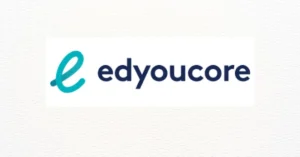In an unassuming corporate park on the outskirts of Austin, Texas, a name begins to echo louder across boardrooms, coding forums, and academic circles: Horus Company.
Once a quiet data tools startup operating in a niche corner of enterprise software, Horus Company is now a symbol of something larger: the convergence of artificial intelligence, secure systems architecture, and the shifting nature of modern labor. For those paying attention, Horus is more than just a tech firm — it is a vision, a playbook, and a provocation.
What exactly does Horus do? That question is easy to ask, but surprisingly difficult to answer succinctly. Depending on whom you ask, Horus Company is:
- A platform for autonomous systems integration
- A data orchestration company
- An AI ethics engine
- Or even a post-cloud infrastructure layer
Its employees — engineers, linguists, former intelligence officers, and urban planners — tend to give less emphasis to the product and more to the philosophy: “visibility and sovereignty through design.”
This article explores the origins, growth, operations, and significance of Horus Company, decoding the mystique behind the name and explaining how it reflects the current trajectory of digital innovation — and how it might shape its future.
The Name: Why “Horus”?
Horus, the falcon-headed god from ancient Egyptian mythology, was the symbol of protection, power, and — critically — vision. Often depicted with a single vigilant eye, the Eye of Horus was believed to ward off chaos and ensure clarity.
That metaphor sits at the center of Horus Company’s mission.
At a keynote presentation during a private industry conference in 2024, the company’s founder reportedly said:
“The modern organization is blind. The cloud gave us speed but stole our visibility. We’re building the eye back in.”
In this interpretation, Horus is not just a brand — it’s a design ethos: systems that see clearly, systems that protect from digital chaos, and systems that help leaders regain oversight of increasingly complex digital domains.
Origins: From Defense Roots to Commercial Power
Horus Company began quietly in 2018, founded by a small team of former DARPA researchers and engineers from the private defense sector. Its initial contracts were classified, focused on autonomous control systems and threat detection frameworks.
But by 2021, Horus had started to pivot. As private companies struggled to manage their increasingly hybrid cloud, on-premise, and edge-based networks, Horus offered something different: real-time observability and AI-guided operational awareness.
They didn’t pitch dashboards. They pitched vision layers — infrastructure capable of interpreting the behavior of entire networks and making adaptive decisions with minimal human intervention.
Its first public-sector clients were logistics firms and emergency response agencies. By 2023, several financial institutions and healthcare networks had signed enterprise contracts. In 2025, Horus remains deliberately under the radar — a strategy it claims is both pragmatic and philosophical.

The Product (Sort of): Adaptive Intelligence for Digital Ecosystems
Unlike conventional SaaS companies, Horus avoids selling discrete products. It offers modules — interoperable engines designed to sit atop existing digital ecosystems.
The most commonly deployed are:
1. Sentinel AI
A real-time decision-making model that scans enterprise networks for behavior anomalies, policy violations, or emerging operational risk. It doesn’t just detect — it responds.
2. Atlas Layer
A metadata orchestration service that maps data flows, assigns context, and highlights inefficiencies. It’s a kind of internal GPS for data movement.
3. Perimeter Fog
Horus’s security framework, designed not as a wall but a distributed mesh that responds to real-world changes in real-time. It’s particularly popular among critical infrastructure clients.
Together, these tools aim to solve a growing enterprise problem: comprehension. Not just storing or analyzing data, but understanding what’s happening, as it happens, across a chaotic digital landscape.
Culture: Operating in Silence
Despite rising interest, Horus Company keeps a low public profile. There is no bombastic Twitter account, no influencer-driven product launches, and very little presence at mainstream tech events.
Instead, the company hosts closed-door forums, white-glove onboarding sessions, and confidential workshops with client teams. Its culture, say insiders, is one of disciplined humility — shaped more by mission than market share.
One senior software architect described the internal ethos this way:
“Everyone here assumes that systems can collapse at any moment. We build like failure is guaranteed. That’s our edge.”
Their design philosophy borrows from aerospace, bioengineering, and military operations — emphasizing resilience, redundancy, and graceful degradation.
Ethics, Privacy, and the “Vision Sovereignty” Debate
With its focus on visibility, Horus Company has inevitably faced scrutiny over privacy and data autonomy.
Does giving organizations this level of insight also open doors to surveillance? What safeguards are in place to ensure Horus tools aren’t repurposed for opaque monitoring or control?
In response, Horus has been vocal — if rarely public — about its design principles, which include:
- Decentralized data control: Clients retain absolute control over data residency.
- No persistent logs: User behavioral data is only processed in real-time and never stored long-term.
- Consent-focused AI training: Any data used to improve Horus engines must be fully anonymized and user-consented.
Still, the conversation continues. In a world where “AI transparency” often means very little, Horus Company has to constantly prove that its metaphorical Eye of Horus is not watching its users — but watching for them.
Clients and Use Cases
While NDAs restrict details, industry insiders and leaked reports offer glimpses into where Horus technology is now embedded:
– Healthcare Networks
Used to detect early signs of operational breakdown in large hospital systems — like failures in medication supply chains or critical path disruptions during emergencies.
– Logistics and Supply Chain
Provides AI-enhanced visibility across cross-border inventory routes, especially in high-risk trade corridors.
– Smart Cities
Deployed in municipal environments to monitor real-time behavior of digital services — from traffic light coordination to water system anomalies.
– Banking Infrastructure: Horus Company
Assists in fraud detection and compliance reporting by correlating events across thousands of systems with near-zero latency.
These clients are often not looking for dashboards. They are looking for certainty, interpretability, and speed — in that order.
Investment and Market Strategy
In 2022, Horus Company closed a quiet $90 million Series B round led by a coalition of institutional investors, including tech-focused venture arms, sovereign wealth funds, and one undisclosed university endowment.
What’s notable is that Horus does not plan an IPO.
According to internal strategy memos, the company intends to remain private, favoring stability over scaling theatrics. It prefers strategic alliances over user growth, and mission-fit capital over growth-chasing investors.
This is unusual — and increasingly attractive in a post-SPAC world where venture-funded burn rates have lost their appeal.
Competitors and the Imitation Gap
The rise of companies like Palantir, Snowflake, and Databricks means Horus operates in a crowded space of enterprise AI and data infrastructure.
But its key differentiation is composability. While competitors offer monolithic platforms, Horus’s modular approach allows clients to pick and integrate selectively — without committing to vendor lock-in.
As a result, clients view Horus more like a toolkit for digital sovereignty than a platform to be managed. In this way, Horus has created a new category: invisible intelligence.
Criticisms and Risks
Despite its promise, Horus Company is not immune to criticism.
1. Lack of Transparency
Its secretive culture invites speculation — both fair and unfounded — about what it’s building and why.
2. Limited Access
Smaller organizations often find Horus’s offerings cost-prohibitive or technically complex, limiting adoption to elite institutions.
3. AI Dependency
Some experts warn of “decision fatigue outsourcing” — that organizations using Horus may eventually rely too heavily on AI-based recommendations, reducing critical human judgment.
Looking Forward: Is Horus Building Infrastructure for AGI?
A growing theory among analysts and AI theorists is that Horus Company is not merely optimizing enterprise infrastructure — it is laying groundwork for more autonomous, cognitive digital environments.
In this interpretation, Horus systems are proto-operating systems for future AI-native organizations — where decision-making, security, and strategy emerge algorithmically.
The company has made no public comment on AGI, but its job postings reference “autonomous coordination engines” and “self-stabilizing runtime environments.”
The future of Horus, then, may not be just infrastructure. It may be intelligence as architecture.
Conclusion: The Watchful Future
In mythology, the Eye of Horus was a symbol of protection, clarity, and restoration. In the 21st-century tech landscape, Horus Company aims to become that symbol in digital form.
It is building systems not just to operate faster or cheaper, but to see better — to restore human oversight to technology that increasingly operates beyond our comprehension.
Its vision is ambitious. Its path is opaque. But its relevance is growing with each passing quarter.
And whether or not you’ve heard of Horus yet, chances are: it’s already watching your systems — not as a threat, but as a guardian of clarity in a murky digital world.
For more information, click here.









